Abstract
Buffers of low ionic strength enhanced the ability of both aged and recently prepared equine anti-pneumococcus sera to fix complement. Fixation physiological ionic strength, however, depended upon the age of the antisera. Sera 25–35 years old were not capable of fixing complement at physiological ionic strength, while antisera prepared and tested within 2 years fixed complement at this ionic strength. Heating the antisera at 56° for varying periods of time resulted in loss of ability to fix complement. Low ionic strength buffer partially obviated this loss. γG and γM immunoglobulin fractions were prepared from these anti-pneumococcus sera. The γG immunoglobulin fractions obtained did not fix complement. However, the complement-fixing properties of the γM immunoglobulins reflected those of the whole antiserum.
Full text
PDF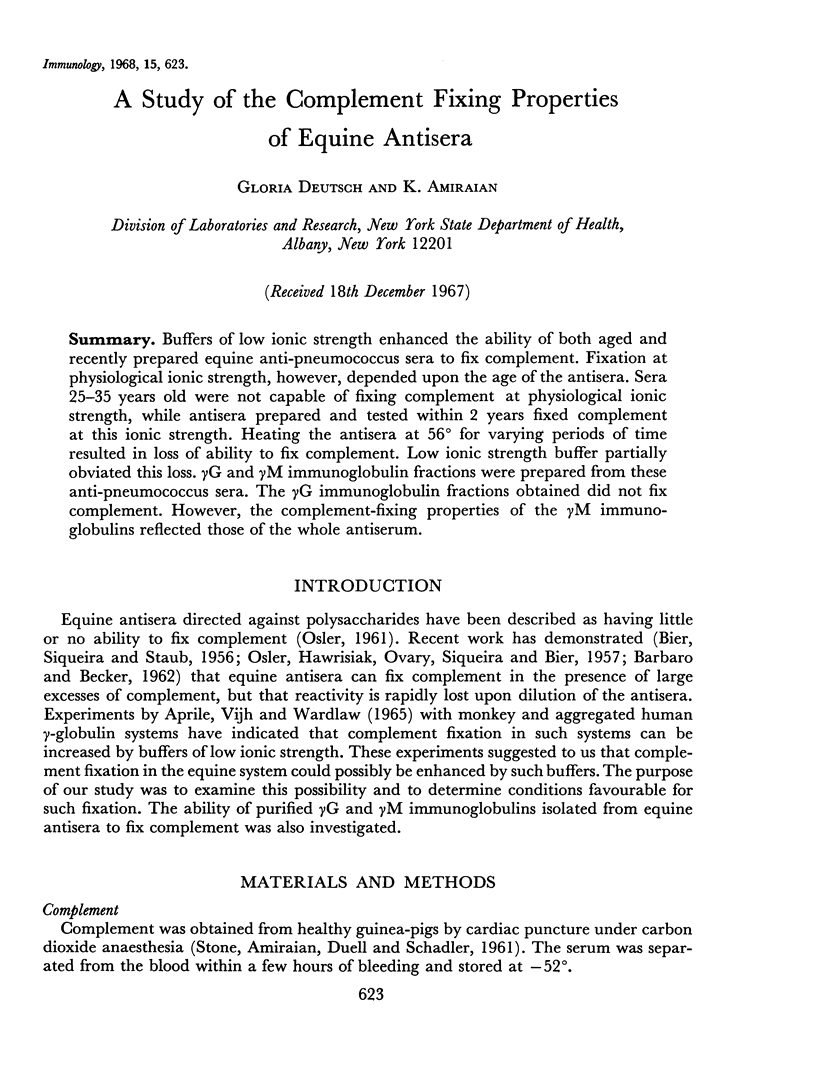
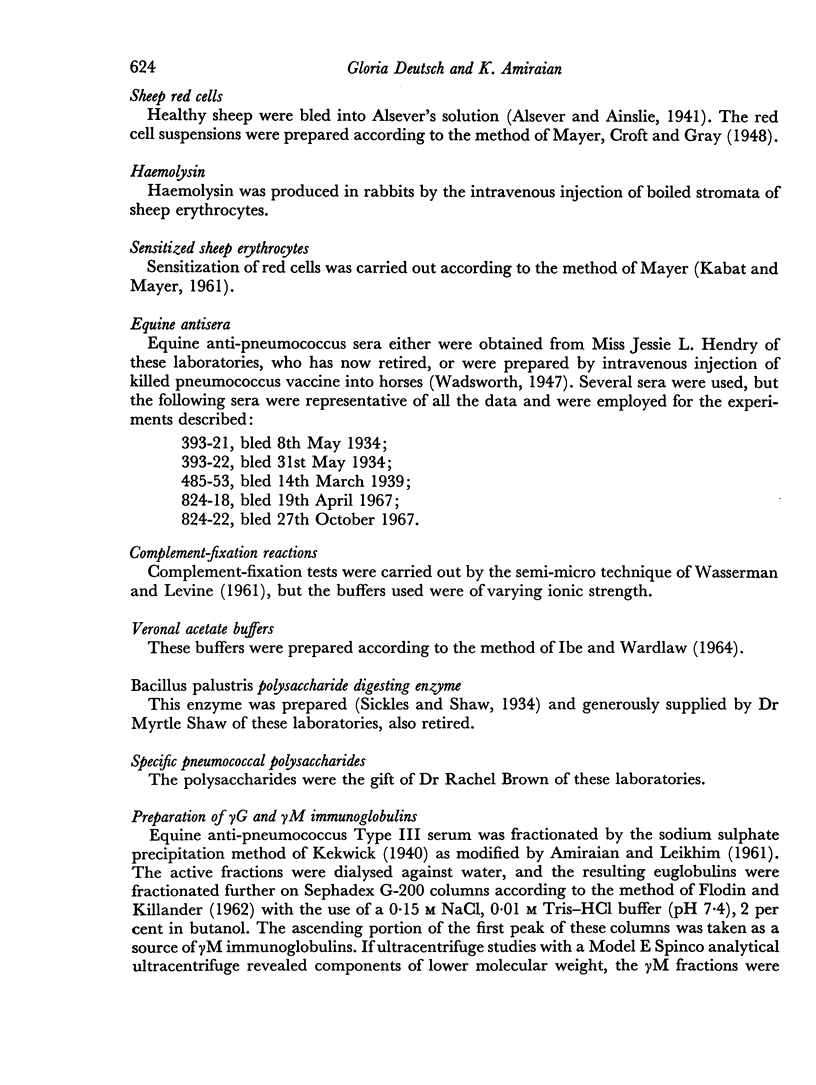
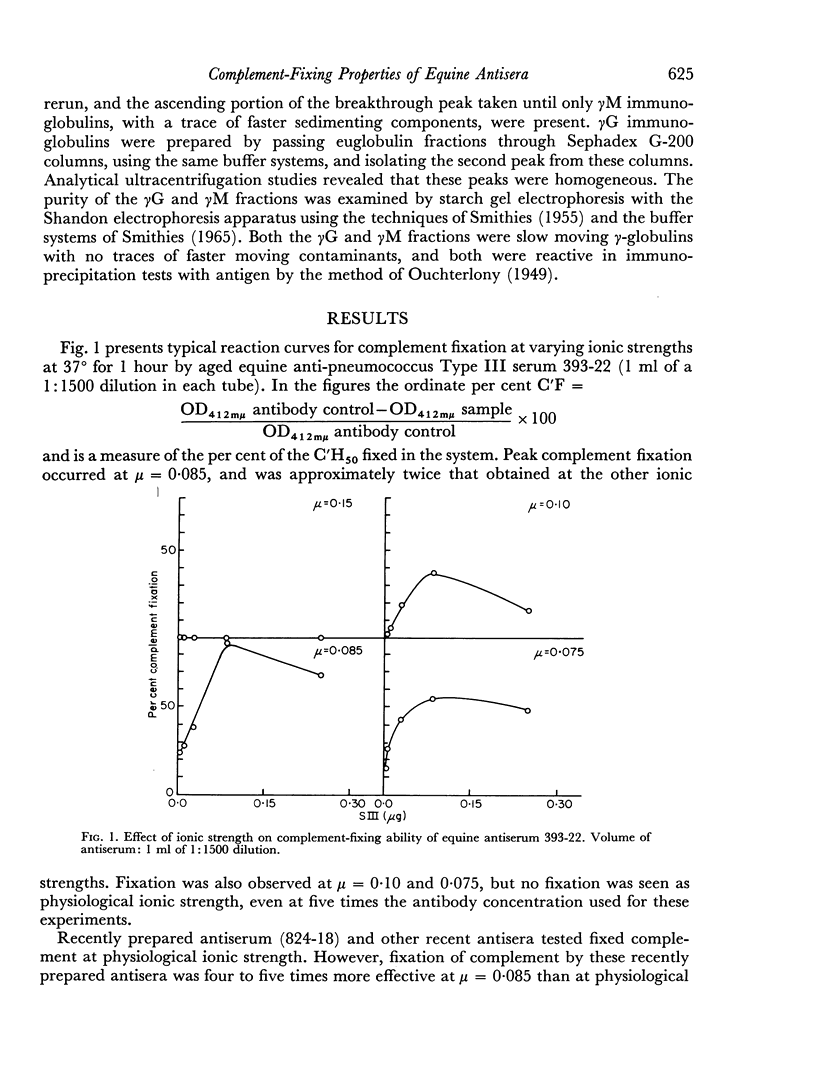
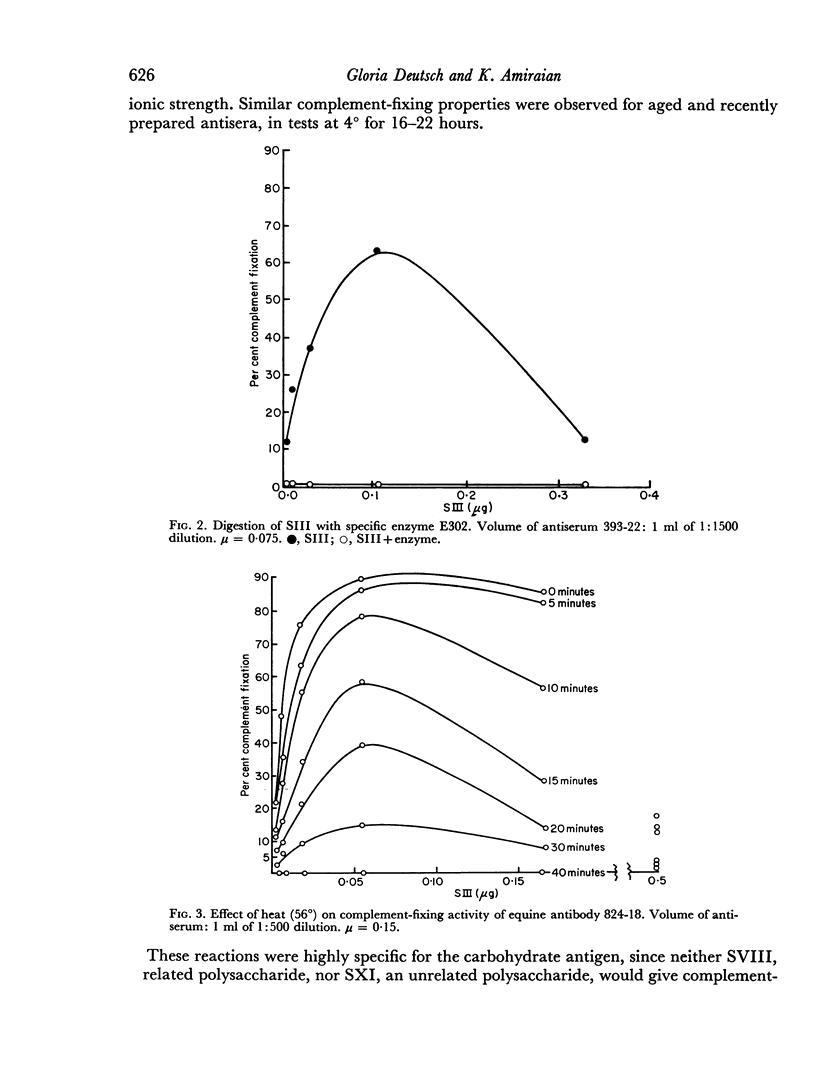
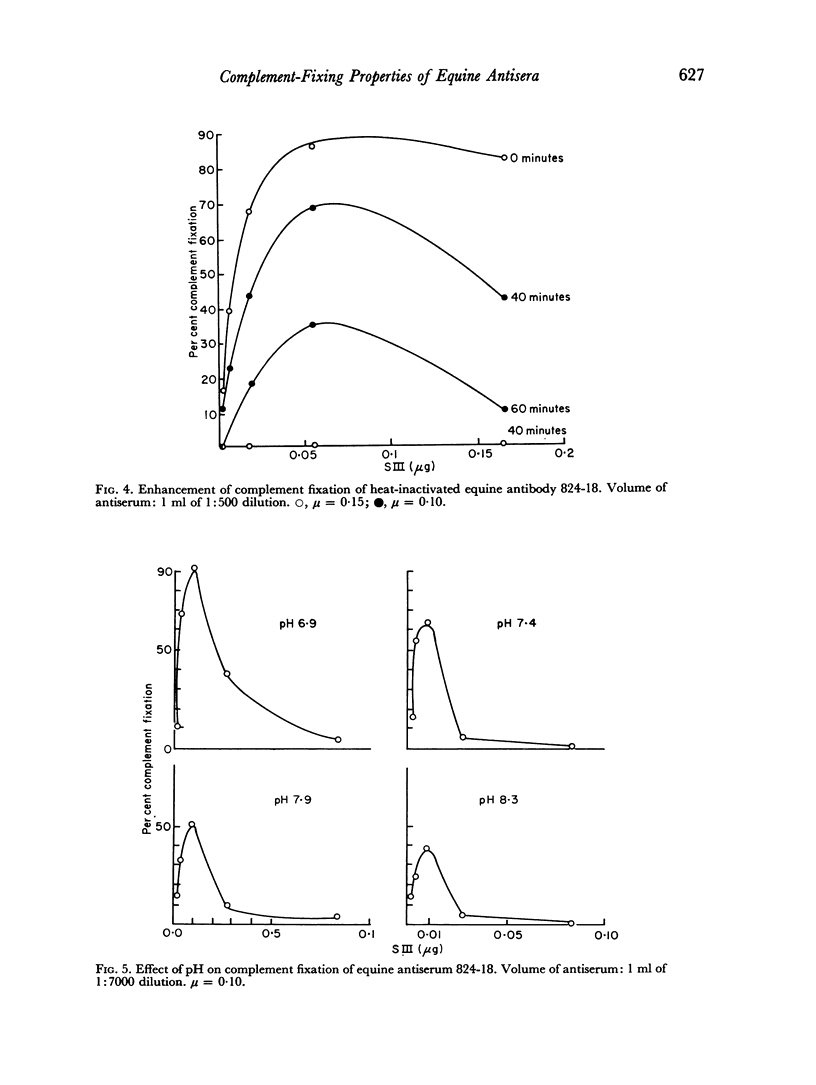
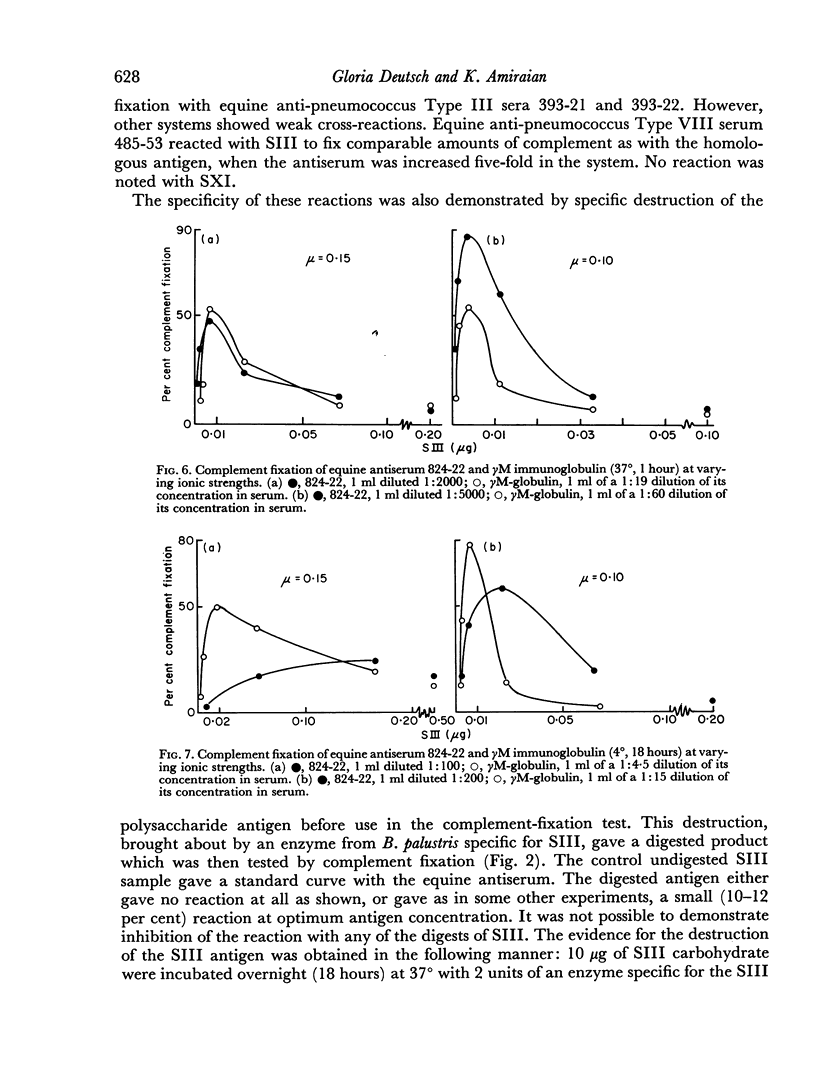
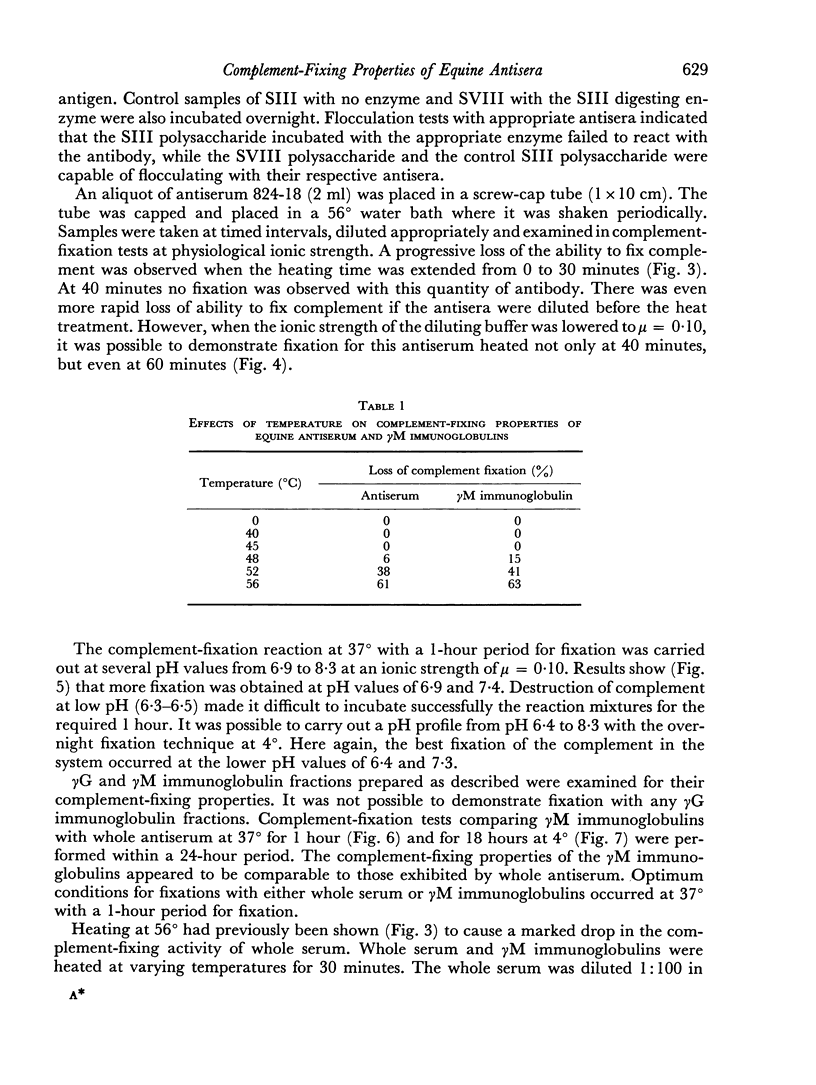
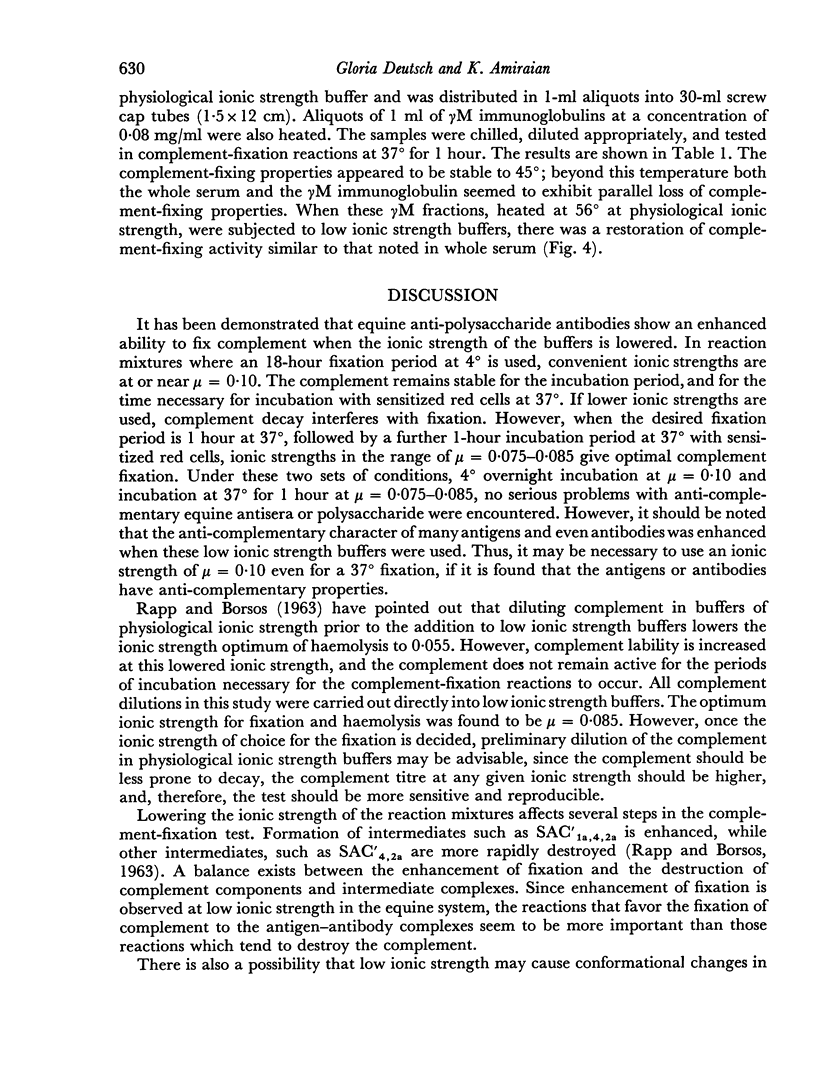
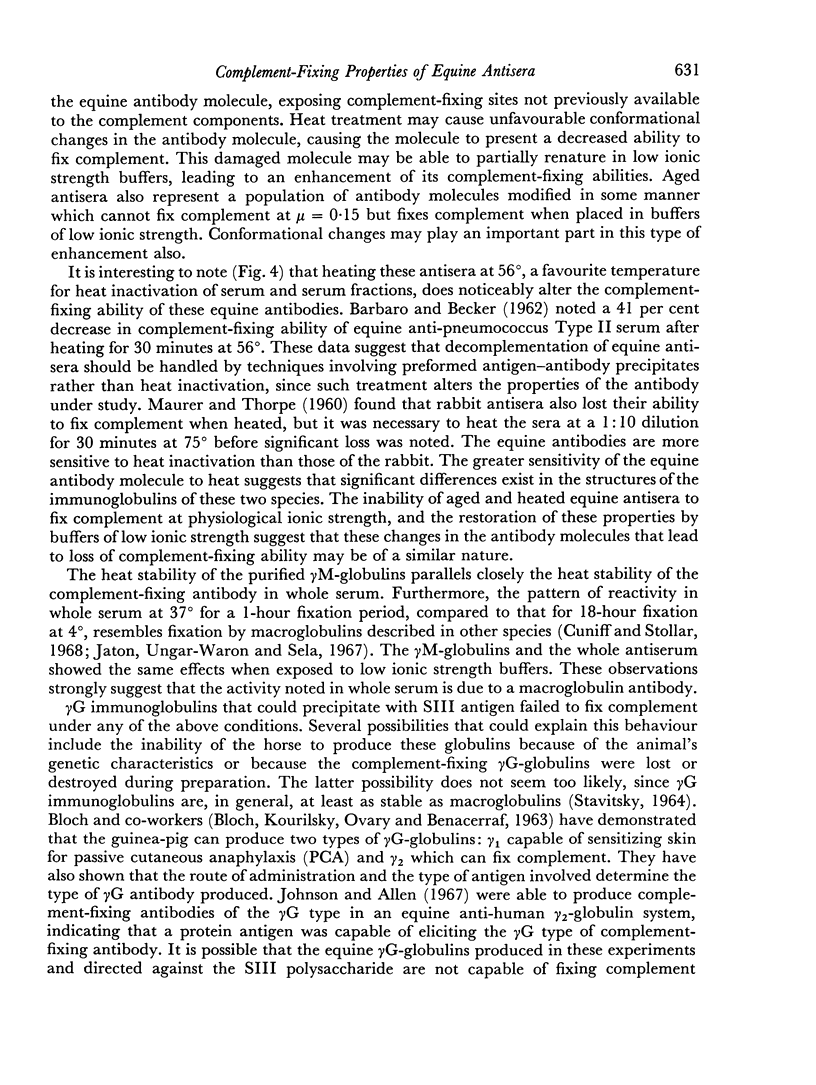
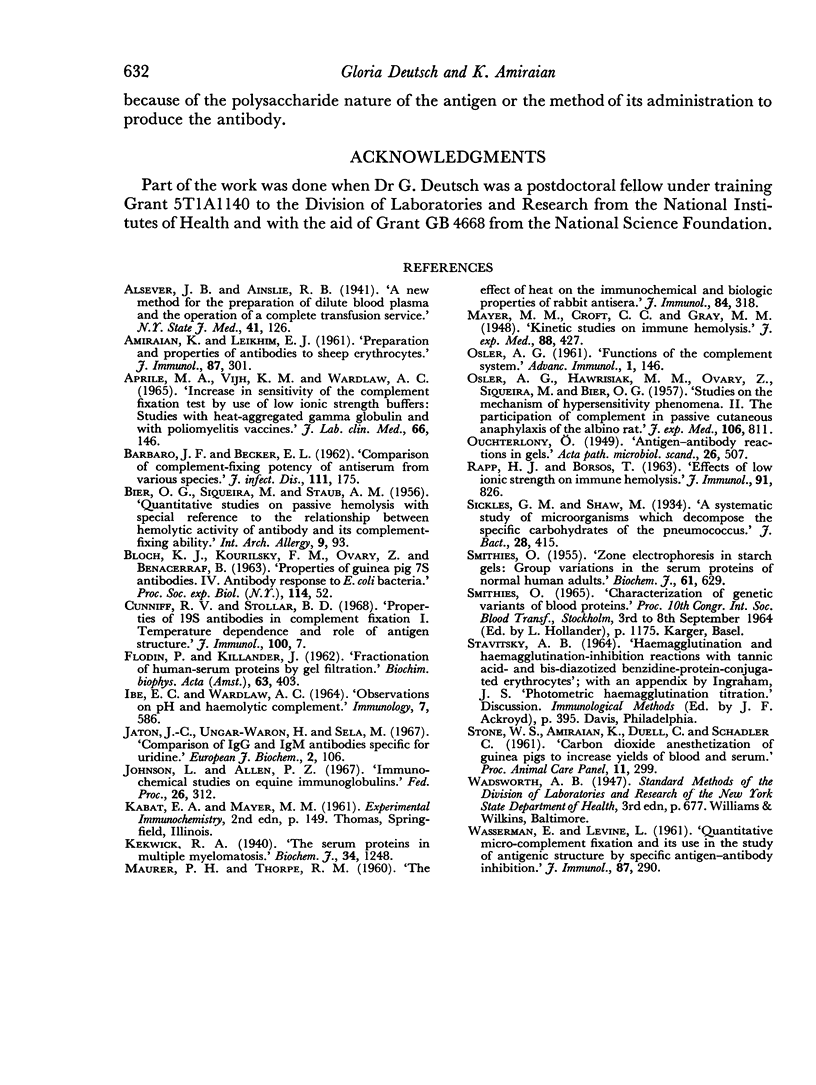
Selected References
These references are in PubMed. This may not be the complete list of references from this article.
- AMIRAIAN K., LEIKHIM E. J. Preparation and properties of antibodies to sheep ervthrocvtes. J Immunol. 1961 Sep;87:301–309. [PubMed] [Google Scholar]
- BARBARO J. F., BECKER E. L. Comparison of complementfixing potency of antiserum from various species. J Infect Dis. 1962 Nov-Dec;111:175–183. doi: 10.1093/infdis/111.3.175. [DOI] [PubMed] [Google Scholar]
- BIER O. G., SIQUEIRA M., STAUB A. M. Quantitative studies on passive hemolysis with special reference to the relationship between the hemolytic activity of antibody and its complement-fixing ability. Int Arch Allergy Appl Immunol. 1956;9(2):93–101. doi: 10.1159/000228321. [DOI] [PubMed] [Google Scholar]
- BLOCH K. J., KOURILSKY F. M., OVARY Z., BENACERRAF B. PROPERTIES OF GUINEA PIG 7S ANTIBODIES. IV. ANTIBODY RESPONSE TO E. COLI BACTERIA. Proc Soc Exp Biol Med. 1963 Oct;114:52–56. doi: 10.3181/00379727-114-28583. [DOI] [PubMed] [Google Scholar]
- Cunniff R. V., Stollar B. D. Properties of 19 S antibodies in complement fixation. I. Temperature dependence and role of antigen structure. J Immunol. 1968 Jan;100(1):7–14. [PubMed] [Google Scholar]
- IBE E. C., WARDLAW A. C. OBSERVATIONS ON PH AND HAEMOLYTIC COMPLEMENT. Immunology. 1964 Sep;7:586–594. [PMC free article] [PubMed] [Google Scholar]
- Jaton J. C., Ungar-Waron H., Sela M. Comparison of IgG and IgM antibodies specific for uridine. Eur J Biochem. 1967 Jul;2(1):106–114. doi: 10.1111/j.1432-1033.1967.tb00114.x. [DOI] [PubMed] [Google Scholar]
- Kekwick R. A. The serum proteins in multiple myelomatosis. Biochem J. 1940 Sep;34(8-9):1248–1257. doi: 10.1042/bj0341248. [DOI] [PMC free article] [PubMed] [Google Scholar]
- OSLER A. G., HAWRISIAK M. M., OVARY Z., SIQUEIRA M., BIER O. G. Studies on the mechanism of hypersensitivity phenomena. II. The participation of complement in passive cutaneous anaphylaxis of the albino rat. J Exp Med. 1957 Dec 1;106(6):811–834. doi: 10.1084/jem.106.6.811. [DOI] [PMC free article] [PubMed] [Google Scholar]
- RAPP H. J., BORSOS T. EFFECTS OF LOW IONIC STRENGTH ON IMMUNE HEMOLYSIS. J Immunol. 1963 Dec;91:826–832. [PubMed] [Google Scholar]
- SMITHIES O. Zone electrophoresis in starch gels: group variations in the serum proteins of normal human adults. Biochem J. 1955 Dec;61(4):629–641. doi: 10.1042/bj0610629. [DOI] [PMC free article] [PubMed] [Google Scholar]
- Sickles G. M., Shaw M. A Systematic Study of Microörganisms Which Decompose the Specific Carbohydrates of the Pneumococcus. J Bacteriol. 1934 Oct;28(4):415–431. doi: 10.1128/jb.28.4.415-431.1934. [DOI] [PMC free article] [PubMed] [Google Scholar]
- WASSERMAN E., LEVINE L. Quantitative micro-complement fixation and its use in the study of antigenic structure by specific antigen-antibody inhibition. J Immunol. 1961 Sep;87:290–295. [PubMed] [Google Scholar]


